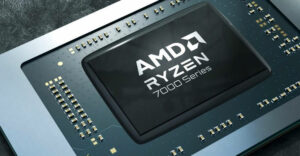A cocktail of increased supply, slowing demand and added capacity is bringing down the price of graphics chips. It could also signal the beginning of the end of the semiconductor shortage that’s been plaguing the world since the start of the Covid pandemic.
The decline in graphics chip prices is a simple case of supply and demand, according to Jack E. Gold, founder and principal analyst with J.Gold Associates, an IT advisory company in Northborough, Mass.
“The demand for graphics chips is falling, along with the decline in PC sales post-pandemic,” he told TechNewsWorld. “That coupled with the graphics companies severely restricting the ability to do crypto mining on their chips is making for less demand.”
That demand is likely to continue to take a hit this summer when Ethereum cryptocurrency community adopts a new way to mine its crypto. The method called “proof-of-stake” doesn’t require as much computing power and graphics muscle to mine the cryptocurrency that the previous model required.
The current demand slump doesn’t mean graphics chips are declining in popularity, Gold continued. “It’s really a short-term, market adjustment period,” he said.
“Price is nearly always a function of supply and demand,” he added. “If prices are going down, the market is producing more chips than people are buying.”
“It can also be an indication that a new generation of chips are coming soon and vendors are cleaning out their inventories,” he said. “It’s about this time in the year when lots of new chips get introduced, to be available for the holiday season.”
Insuring Capacity
The overall chip market, not just graphics chips, is being impacted by softening demand and increasing supply issues. “Things will continue to improve over the course of the year,” IDC semiconductor analyst Shane Rau told TechNewsWorld. “The chips in shortage now are in the area of power management.”
As for the graphics chip market, he noted, “On the demand-side, over the course of the year, there’s been a softening in demand for PCs this year compared to last year,” he said.
“On the supply side,” he continued, “Nvidia and AMD have taken steps to increase their supply by purchasing extra capacity, making commitments with their wafer and packaging suppliers. They’re offering to buy all the capacity they can buy to reduce the risk for the suppliers when they increase capacity.”
Fluctuating chip prices can influence the price of other components that go into graphics cards, he added.
“Nvidia and AMD often help their board customers obtain graphics memory, so they can buy the memory that their boards need at reasonable prices. That can create a dependency,” he explained. “If GPU demand slows or prices for cards go down, that could have an effect on the demand for graphics memory and the price of the memory that goes on the board.”
“It’s important to note that customers don’t buy GPU chips,” he added. “They buy PCs with a GPU card inside, or they buy the card. The card has a number of other components and moves through different parties along the supply chain. Each of them contributes its margins to what a customer pays. So there are more variables than just the GPU in the final price paid by the customer.”
That may also be the reason that shortages still plague the graphics card market. For example, a recent check by Reuters found that Nvidia’s GeForce graphics cards remained largely out of stock at retailers like BestBuy and Newegg Commerce.
Imbalanced Chip Supply
Another sign that chip shortages are coming to an end is the steady improvements seen in the Gartner Index of Inventory Semiconductor Supply Chain Tracking. “[The index] is estimated to improve further in 1Q22, making it the third consecutive quarter of improvement,” said Gartner Vice President for Semiconductors and Electronics Gaurav Gupta.
“Because of the slower-than-expected performance in 4Q21, the GIISST is now expected to enter the normal zone by 3Q22,” he told TechNewsWorld.
There are still chip types that will be in short supply, he continued, like PMIC/FPGAs/enterprise-grade networking chips and automotive-grade MCUs. Chips that rely on eight-inch wafers will see a tight situation for a longer period of time, as much as a few years, he added, and there is also a temporary shortage of 4G SoCs due to strong migration towards 5G, he added.
There is also demand softness in consumer electronics, like smartphones and notebook computers, he continued. Rising costs and inflation are the primary reason for that, he noted, with fuel prices going up, logistics being disrupted due to continued Covid restrictions in China and raw materials prices rising due to Russia’s invasion of Ukraine.
“The situation of imbalanced chip supply still remains strong and is causing the index to reach the normal zone before the supply normalcy across different chip types is attained,” he said. “We expect normal inventory across all chip categories to be attained by 2Q23.”
Uneven Recovery
While the chip supply appears to be recovering, there could be some bumps in the road that could disrupt the recovery.
“The execution of the semiconductor makers is critical,” Rau said. “We’ve seen in the last couple of years where the failure to produce sufficient quantities of GPUs can create shortages. That’s a wild card to watch out for.”
Even if processors are in supply, shortages in other components can derail production. “If a manufacturer of a PC lacks one critical component to build the PC , that can hold up production of the entire PC,” Rau explained.
“The PC also has to get to market,” he continued. “PCs with discrete GPUs tend to get priority because they’re expensive so they get flown on a plane, but most PCs are shipped on a boat. There’s still some gridlock at ports in Asia and the United States preventing systems from getting to market in a timely manner.”
Lockdowns in China could also influence shipments. “If the lockdowns extend for several more weeks, then they could have a material impact on system building,” Rau said.
“Whatever the duration of the shortage, it will be an uneven recovery in supply, as some chips will hit full production capacity to cover market needs sooner than others,” Gold added.
“It will depend on the process node they are produced under, how the market for specific devices changes, such as memory chips versus CPUs,” he continued. “So we need to be careful about broad-brush strokes saying there is a supply shortage or there isn’t.”
























































